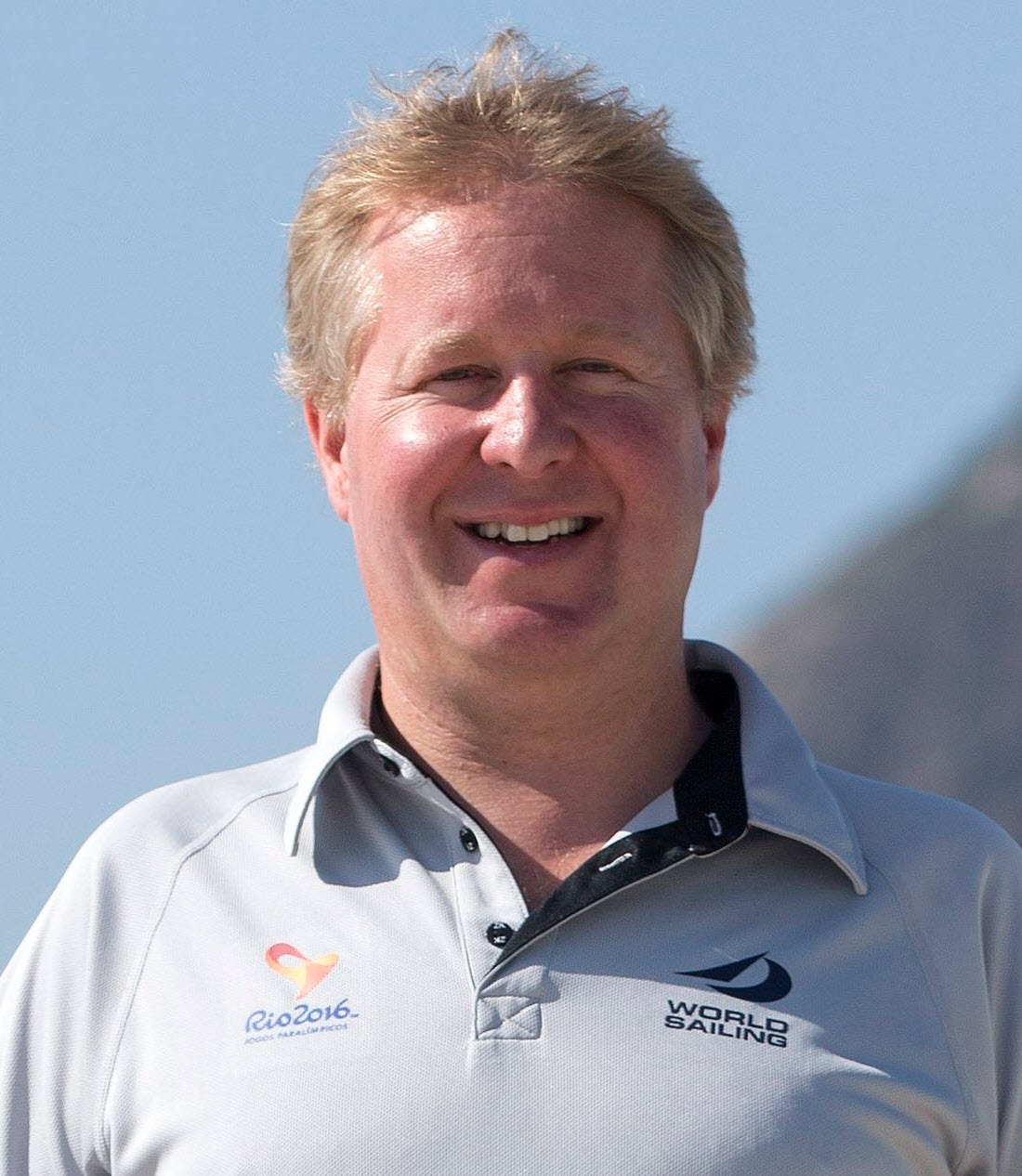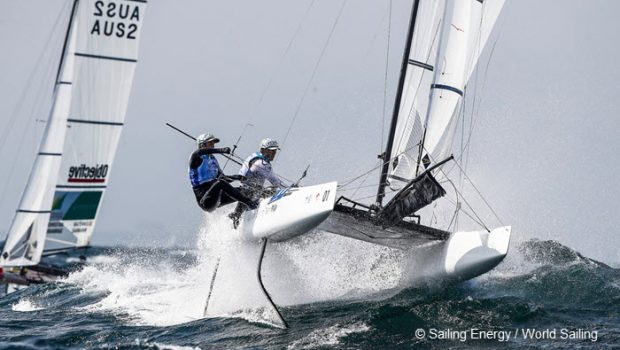Tokyo 2020: Could be great for the sport
Published on January 14th, 2020

Alastair Fox
With just six months to go before the Tokyo 2020 Olympics, time is short as nations and their athletes prepare for the conditions on Sagami Bay. And while the host is responsible for preparing the venue, it is compulsory for each sporting federation to manage the process.
Alastair Fox is the Director of Events at World Sailing, and he is on point to insure the Enoshima venue will be ready. But with every Olympics comes challenges to overcome, so Scuttlebutt editor Craig Leweck checks in with Alastair for an update.
Fox discussed the venue in Part 1 and the heat in Part 2, and in this final report details the sailing conditions.
The wind appears to come mostly from the southerly quadrant off the ocean and not so much off the land.
We’ve had everything, with days of northerlies off the land which become very shifty and very flat water, while the southerly sea breezes can have the waves build up which creates pretty exciting conditions. While the land breeze can be hot, if we have those southerly conditions, I don’t think heat’s going to be an issue at all.
Rio had the advantage of course locations both inside Guanabara Bay and offshore, which provided options for when it was too windy outside for some of the equipment, but with Sagami Bay there’s no place to hide.
You’re absolutely right. In Rio, there was an absolute difference between the inshore racing areas and the offshore racing areas, and it was a problem on some days during Rio when we had the bigger breeze conditions and the bigger wave conditions outside the bay, and felt we had to move, for example, the Nacras back inside which kind of changes the game. This also interfered a bit with our production broadcast plan which wasn’t ideal.
But as you say, in Enoshima there’s really nowhere to hide. All the course areas are going to have very similar conditions, and in fact, the areas closer to shore are going to have the added impact of waves refracting off the coast for added difficulty. At the venue, we’ve had big conditions which limited the Nacras and 49erFXs from racing because we were genuinely concerned, as I think were the athletes, about the safety of going out.
So if we have big breeze conditions, it’s going to be pretty exciting for the sailors, plus we’ll be able to capture all that as part of our broadcast, which will be great for the sport.
Are there any options to mitigate cancelling races in strong winds?
Not really, no. We’ve learned in the big offshore breezes, the reality is that we wouldn’t send fleets off to the furthest away course areas. The furthest away course is called Hayama, it’s five nautical miles away, and transiting that distance is not going to be that safe if you’ve got big conditions. So we’d use the nearer course areas wherever we can in those types of conditions and in particular when we’re looking at the skiffs and the multihull.
Do those fleets have an upper wind limit?
We have race management policies, and each class has a slightly different a set of rules around them, but what we see in Enoshima as the wind strength is not necessarily the problem but rather the sea state which carries more influence in a decision as to whether racing is safe or not.
Is that part of class rules?
No, not really. So it then becomes down to the discretion of the race committee and ultimately the discretion of the technical delegates on shore. So we’ll be spending a lot of time talking to the race officers on the water and making decisions on whether it’s safe to race or not.
You want the show to go on.
We absolutely want the show to go on, and the good thing about the Olympics is that, for each event, we have three reserve days built into their schedule. So we’re pretty confident that, even if we have some pretty wild days and some pretty light days – and we’re expecting both of those – that we’ll still have enough time to complete our opening series and get a medal race done.
Anything else notable with the water conditions on Sagami Bay?
Not really. There really isn’t a problem with seaweed, but if we have typhoon with a lot of heavy rain, then, like anywhere, we’ll see a lot more debris in the water. That’s just natural. Most of the issues we’ve had to this point in the field of play are with sailors hitting fishing gear, so our focus has been more on addressing that, but we’ll have a clean field of play for 2020.
But all in all, it sounds like you’re in pretty good shape?
Looking back at Rio, we were always nervous, for want of a better word, largely because of the water quality, but we always had faith in the organizing committee and, importantly, the sailing community, that they would run a great regatta, and they did.
In the case of Japan, as well, we know that there are great local volunteers, great race management expertise, and when we bring our team in together, we’re absolutely sure that we can have great, great Olympic Games.
But there is still an awful lot for Tokyo 2020 to do, particularly around heat mitigation, around ensuring we’ve got the right medical and safety plans in place, making sure that the venue is working in a kind of seamless way.
So there’s a lot of work to be done, but I have no doubt that it will be a huge success.
THIS IS PART THREE OF A THREE PART SERIES.









 We’ll keep your information safe.
We’ll keep your information safe.